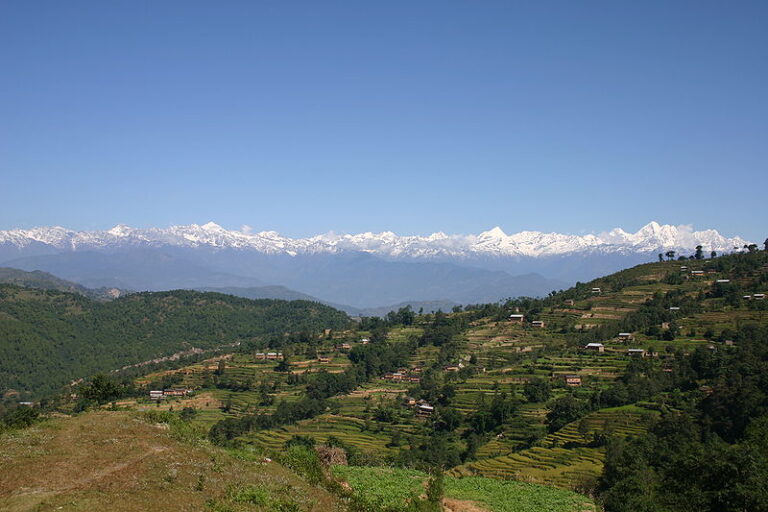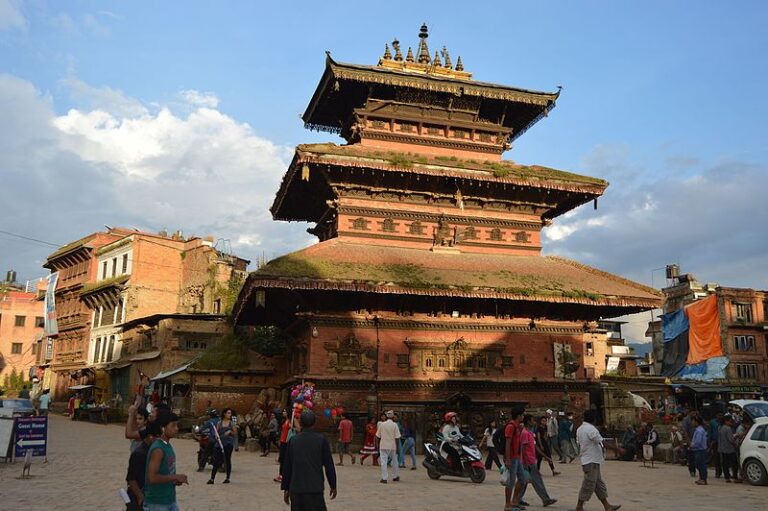Day 01 – Drive to Sundarijal and trek up to Chisopani (2310 meters a.s.l-5 hours walk) – Sundarijal is 13 kilometers far from Kathmandu city; which is start point for the Nagarkot trek. From Sundarijal; we will climb through the forest to a medieval sight reservoir, Dam and waterworks. The trail passes via terraced field with beautiful view of Kathmandu valley, green hills, charm landscapes and some of the sprawling Tamang people. After 5 hours pleasant walk, we will get Chisopani village where we will stay one overnight at guesthouse.
Day 02 – Trek to Nagarkot 2175 (meters a.s.l – 5 hours walk) – begins of the morning; we will walk an approximately 3 hours on the flat trail then pleasant walk downhill trail bring us to small village called Chowki bhanjyang. During the trek; we will have beautiful view of forest, agricultural terraced field, charms sights of Kathmandu valley and far view of high Himalayas to the north. There are dozens of Good guesthouses in Nagarkot and offers comfortable bed and delicious meals.
Day 03 – Sight trip to Nagarkot viewpoint – Early in the morning, we will climb up an approximately one hour to the Nagarkot viewpoint that purpose to see grand views of mount Everest 8848 meters, Lhotse 8201 meters, Manaslu 8163 meters, Annapurna I 8091 meters, Dhaulagiri 8167 meters and their splendid ranges. Apart of high mountains views Nagarkot viewpoint command to see gorgeous sunrise and sunset view. After sight of high mountains; we will walk down to hotel and explore the town where can be seen local people’s activities.
Day 04 – Trek to Chagunarayan and drive back to Bhaktapur Darbar Square – After breakfast; we will walk downhill trail to get Chagunarayan temple that may take an approximately 3 hours. The trail passes though the small villages, agricultural terraced field and garden of oranges and Banana. The major attraction of the day would be charms landscapes, verdant paddy field and rural settlements of Tamang people. After exploration of Chagunarayan Temple; we will drive an approximately one and half-hours to the Bhaktapur where we will spend a joyful night.
Day 05 – Exploration of Bhaktapur Darbar square and drive back to Kathmandu – Bhaktapur Darbar squire is already recorded as world heritage site which is located 13 kilometers far from Kathmandu city and consisted with four distinct squares as Darbar square, Taumadhi square, Dattatreya square and pottery square but still whole area is informally known as Darbar square and offers to explore so many historical places and ancient temples as Pachapanne jhyale Darbar, Vatsala temple, Nyatapola temple, Mini Pashupati temple, Erotic elephant temple, Ugrachandi and Ugrabhairab temple, Rameshwar Temple, Bhairabnath temple, Kedarnath temple and Vatsaladevi temple. After exploration of this amazing Darbar Square we will drive an approximately one hours to Kathmandu.
Autumn season is considered as best season to do trekking trip in Nepal due to see magnificent Himalayan views, clear sky without any clouds and Spring season is second best season to explore Himalayas of Nepal because will be dry weather and dusty; means poorer Himalayan views but the compensations are several; fewer crowds, warm weather and spectacular Rhododendrons, magnolias and Orchids blooms.
October to November – In general the first two months of the dry season offer the best weather for trekking and the main trails are heaving with trekkers at this time, for good reason.the air is crystal clear, the mountain scenery is superb and the weather is still comfortably warm.
December to February – These months are also good time for trekking trip to higher region but the cold can be bitter and dangerous at high altitudes. Getting up to the higher region and high passes can be a real endurance test and high passes are often blocked by snow.
March to April – These months are dry weather and dusty; means poorer Himalayan views but the compensations are several; fewer crowds, warm weather and spectacular Rhododendrons, magnolias and Orchids blooms.
June to September – These months are rainy season of Nepal so monsoon rains bring landslides, slippery trails and hordes of leeches. Raging rivers often wash away bridges and stretches of trekking path.
Itinerary plan – The given itinerary plan is flexible so it is possible to customize according to trekker’s desire, health condition, physical fitness and time frame.
Food – All tea houses have similar menus which feature local traditional Nepali items such ass local hand made breads, potatoes and Dal Baht which rice served with lentil soup with vegetable curry and typical pickles and selected western dishes like pasta, macaroni, pizza, noodles and burgers. Keep in mind most dishes are vegetarian.
Water – water bottle is available in all tea houses however, be mindful of the environmental impact your purchase/plastic bottle will have. Untreated water is available in all teahouses free of charge. Carry your own water treatment system. Boiled water is available for additional charge.
Accommodation -You will be sleeping in private rooms in teahouses. They usually have two single beds with mattress and blankets are available by request. Bathrooms (squat style) are mostly shared; you will need to carry your own toilet paper. Toilet paper is available for purchase throughout the trek. Cold showers are always available. Hot showers or hot bucket are available in some teahouses for additional charge.
One can get fairly excited about a trip to a previously unknown location. But while traveling you need to make sure that you have all materials that you would require to be ready for every possible situation. And here in Nepal, you will most definitely need to pack a few things for your stay to be as smooth and memorable as possible.
- Hiking boots (preferably waterproof)
- Camp shoe
- Wind/waterproof shell
- Waterproof pants
- Fleece jacket
- Wool thermals
- Sun hat
- Beanie
- Gloves
- Sunglasses
- Sunscreen and chopstick
- Water treatment system
- Medical kit
- Headlamp
- Trekking poles
- Personal toiletries
For a quote, please contact us at: gobinmuhong@hotmail.com
All quotes include:
- Airports picks up and drop off.
- One day sightseeing around the Kathmandu valley.
- Accommodation in Kathmandu including breakfast.
- All required permits.
- Transportation to/from trek start and end points from Kathmandu.
- Professional English speaking guide with a medical kit and porters (including their meals, drinks, accommodation and insurance).
- Accommodation and meals.
- 13% government tax and 10% service charge.
All quotes do NOT include:
- Client insurance
- Tips for guide and porters
- Personal expenses (phone calls, laundry, extra beverages bill, battery charge, wifi charge, hot shower charge, mineral water, snacks)
- Extra porter






